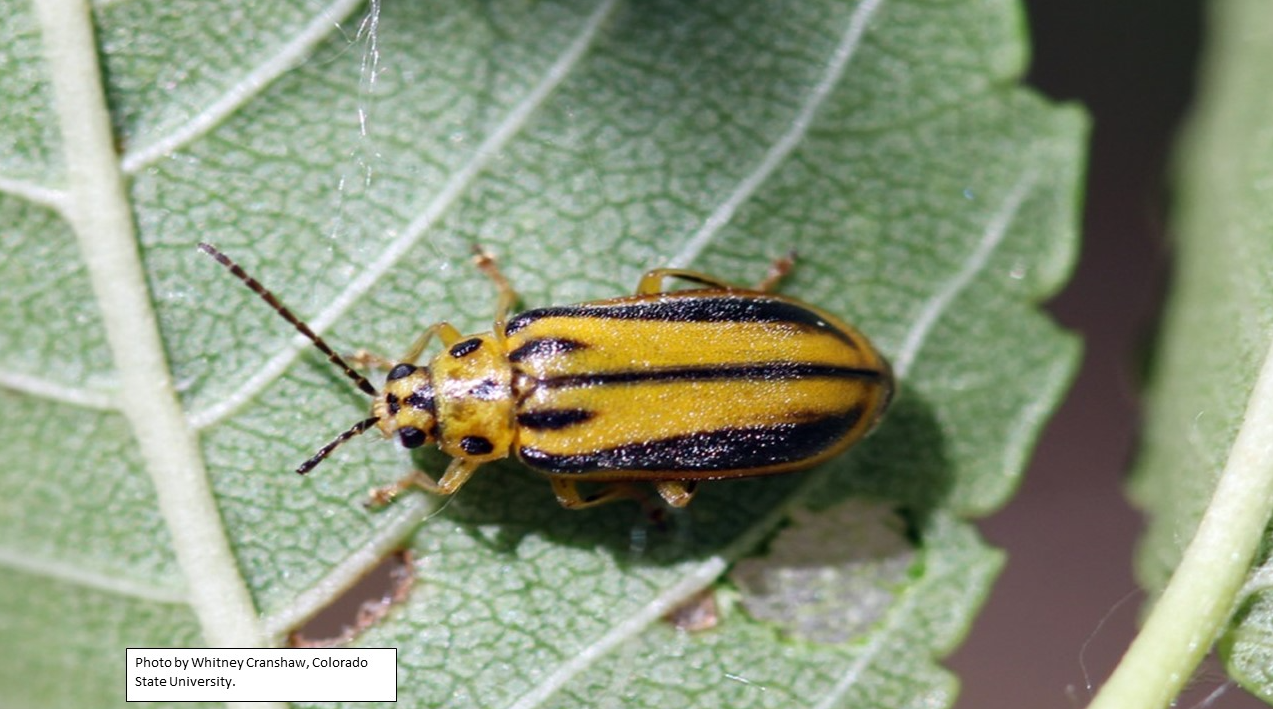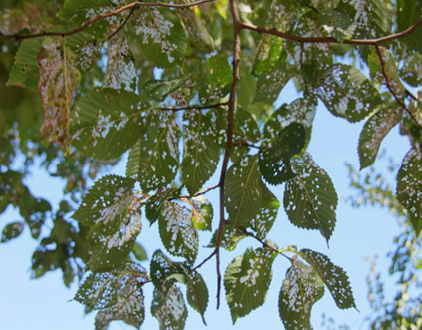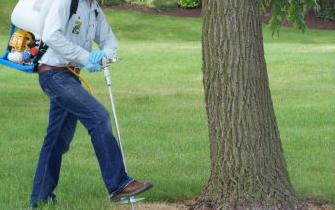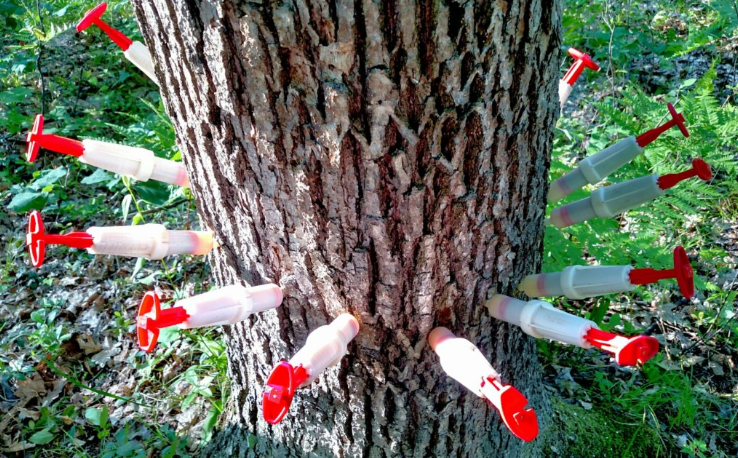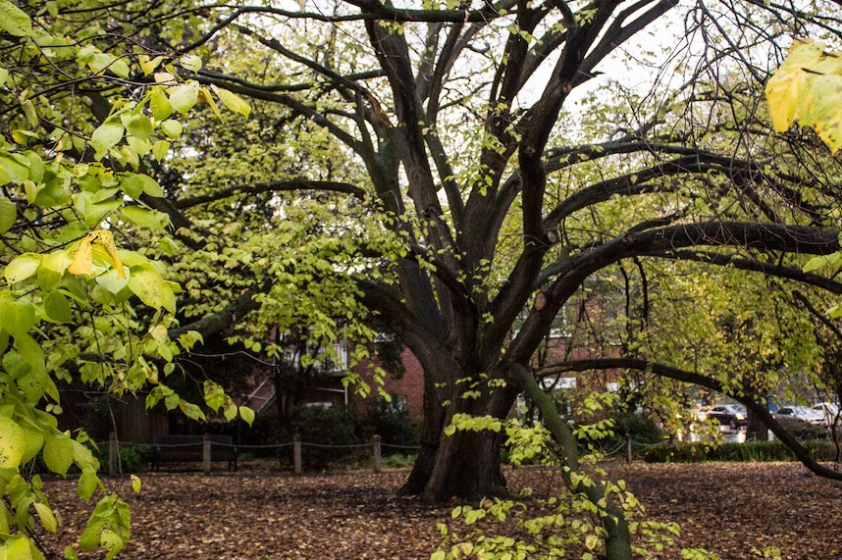What is Elm leaf beetle?
Understanding the Elm Leaf Beetle: A Threat to Melbourne's Trees.
Australia, especially Melbourne, boasts a diverse range of flora, with elm trees contributing significantly to the urban landscape. However, amidst the beauty of these trees lurks a persistent threat: the Elm Leaf Beetle (Xanthogaleruca luteola). This invasive pest has garnered attention due to its damaging impact on elm trees, prompting concerns among residents and arborists alike.
The Elm Leaf Beetle (Xanthogaleruca luteola).
What is Elm Leaf Beetle?
The Elm Leaf Beetle is a small but destructive insect native to Europe and Asia. It was inadvertently introduced to Australia, where it has found a suitable habitat in the elm trees that line many streets and parks, particularly in cities like Melbourne. The beetle feeds on elm leaves during its larval and adult stages, causing significant defoliation if left unchecked.
How Does it Affect My Tree?
Elm Leaf Beetle infestations can severely compromise the health of elm trees. The larvae feed on the leaves, creating characteristic skeletonised patterns as they devour the soft tissue between leaf veins. This feeding reduces the tree's ability to photosynthesise effectively, weakening its overall vigour. Moreover, repeated defoliation over consecutive seasons can lead to branch dieback and even tree mortality in severe cases.
How Do I Identify Elm Leaf Beetle?
Identifying an Elm Leaf Beetle infestation requires keen observation, especially during its active periods in spring and early summer. Look for the following signs:
Skeletonised Leaves: Leaves with lace-like patterns where the soft tissue has been consumed.
Yellowing or Browning Foliage: Due to reduced chlorophyll production caused by leaf damage.
Adult Beetles: Small, yellowish beetles about 4-7 mm long, often seen on leaves, particularly during warmer months.
Shot holes on the foliage produced by the Elm Leaf beetle.
How is Elm Leaf Beetle Treated?
Effective management of Elm Leaf Beetle involves a combination of cultural, biological, and chemical control methods. Here are some strategies commonly employed by AQF 5 Arborists and tree doctors:
Systemic Insecticides: Absorbed by the tree for long-lasting protection.
Applied via soil drenches or trunk injections (e.g., imidacloprid, dinotefuran).
Contact Insecticides: Directly sprayed onto foliage for immediate knockdown.
Effective against beetles on contact (e.g., bifenthrin, permethrin).
Botanical Insecticides: Derived from plant extracts for natural pest control.
Disrupts beetle physiology upon contact (e.g., neem oil, pyrethrum).
Key considerations:
Timing: Apply during early beetle activity in spring.
Coverage: Ensure thorough application to all affected foliage.
Environmental Impact: Choose products with minimal impact on non-target organisms.
Professional Application: Best performed by qualified AQF 5 Arborists or licensed applicators for safety and efficacy.
Integrated with cultural practices and tree health management, these sprays effectively combat Elm Leaf Beetles while sustaining Melbourne's urban elm tree populations.
Soil Drench
When Should I Treat Elm Leaf Beetle?
Timing is crucial when considering treatment options for Elm Leaf Beetle. Typically, treatments are most effective when applied during the larval stage, which occurs in spring when larvae emerge from overwintering sites. Early detection and intervention, ideally under the guidance of a Consulting Arborist, can prevent significant damage and ensure the health of affected trees.
In conclusion, while the Elm Leaf Beetle poses a significant threat to Melbourne's elm trees, proactive management strategies can mitigate its impact. Awareness of the beetle's life cycle, early detection, and appropriate treatment options are key to preserving the aesthetic and environmental benefits that these majestic trees provide to urban landscapes. By working with qualified professionals such as AQF 5 Arborists, residents can contribute to the sustainable management of elm tree populations, ensuring their longevity for generations to come.
As Melbourne continues to grow and evolve, protecting its green spaces remains paramount. Understanding and addressing threats like the Elm Leaf Beetle are crucial steps in maintaining the city's arboreal heritage and enhancing its urban ecosystem. By staying informed and taking proactive measures, we can safeguard our trees against invasive pests and preserve their beauty and vitality for future enjoyment.
Prevention: Keeping Your Elm Tree Healthy and Stress-Free
Maintaining the health and vigour of elm trees in Melbourne is paramount not only for aesthetic reasons but also for preventing and mitigating Elm Leaf Beetle infestations. A healthy tree is naturally more resilient to pests and diseases, including invasive species like the Elm Leaf Beetle. Here’s why proactive tree care is crucial:
Why Keeping Your Tree Healthy is Important for Prevention
Natural Defence Mechanisms: Healthy trees are better equipped to resist and recover from insect attacks. They can produce more foliage, which helps compensate for damage caused by feeding insects like the Elm Leaf Beetle.
Reduced Stress: Trees under stress from factors such as poor soil conditions, inadequate watering, or physical damage are more susceptible to pests. Addressing these stressors through proper tree care practices strengthens the tree's ability to fend off pests.
Early Detection: Regular monitoring of tree health allows for early detection of potential problems, including Elm Leaf Beetle infestations. Prompt action can prevent the spread of the pest and minimise damage.
Key Practices for Keeping Your Elm Tree Healthy
Regular Pruning: Prune dead or diseased branches to improve air circulation and reduce areas where pests can hide.
Proper Watering: Ensure elm trees receive adequate water, especially during dry periods, to maintain vigour and reduce stress.
Mulching: Apply a layer of organic mulch around the base of the tree to conserve moisture, moderate soil temperature, and improve soil structure.
Fertilisation: Provide balanced fertilisation to promote healthy growth and enhance the tree's natural defences.
Monitoring: Periodically inspect your elm tree for signs of pests, diseases, or stress. Early detection allows for timely intervention.
By adopting these preventive measures and consulting with a qualified Consulting Arborist or AQF 5 Arborist for guidance, you can significantly reduce the risk of Elm Leaf Beetle infestations and ensure the long-term health and vitality of Melbourne’s elm trees. Investing in proactive tree care not only enhances the resilience of individual trees but also contributes to the overall resilience and beauty of the urban landscape.
In conclusion, while the Elm Leaf Beetle poses a threat to Melbourne's elm trees, proactive management and preventive practices can minimise its impact. By prioritising the health and stress-free status of elm trees through proper care and early intervention, residents can contribute to the preservation of these valuable urban assets. Together, we can safeguard Melbourne’s arboreal heritage and promote a sustainable urban environment for generations to come.
